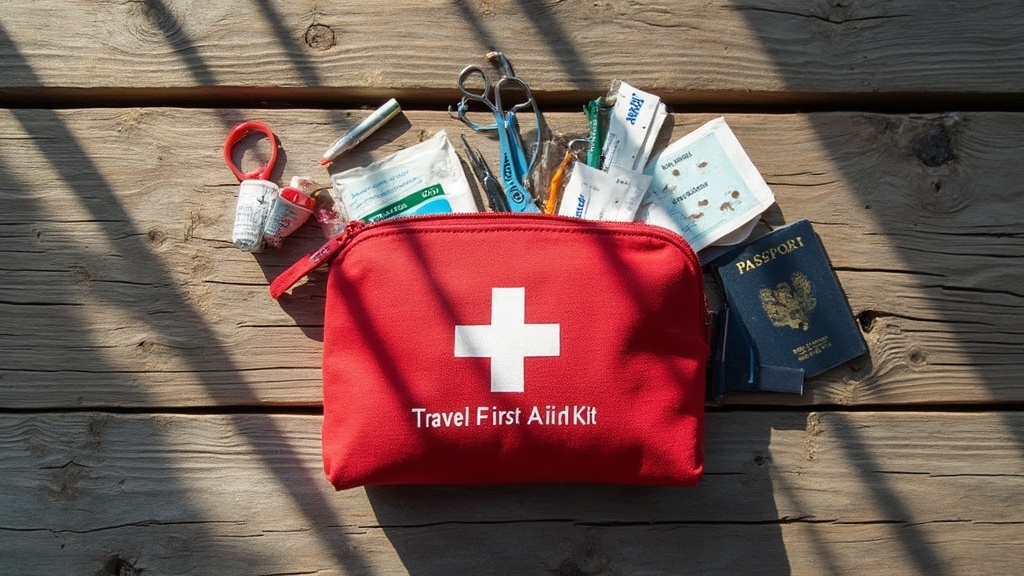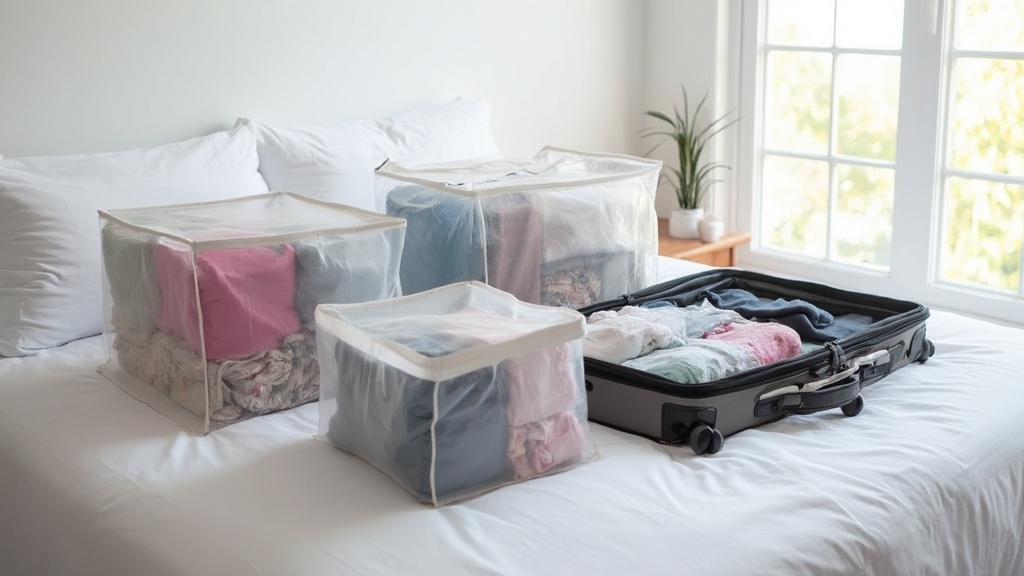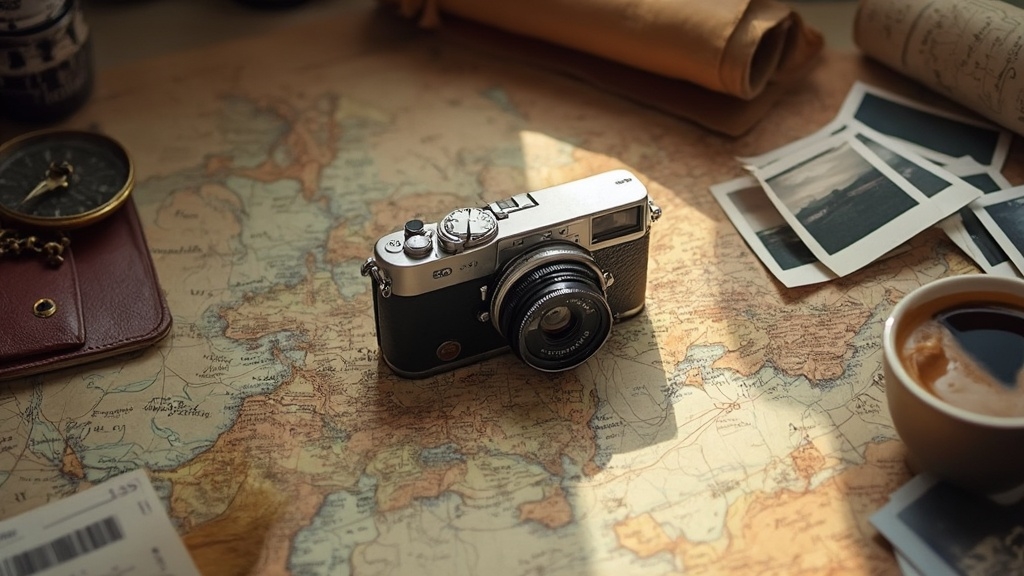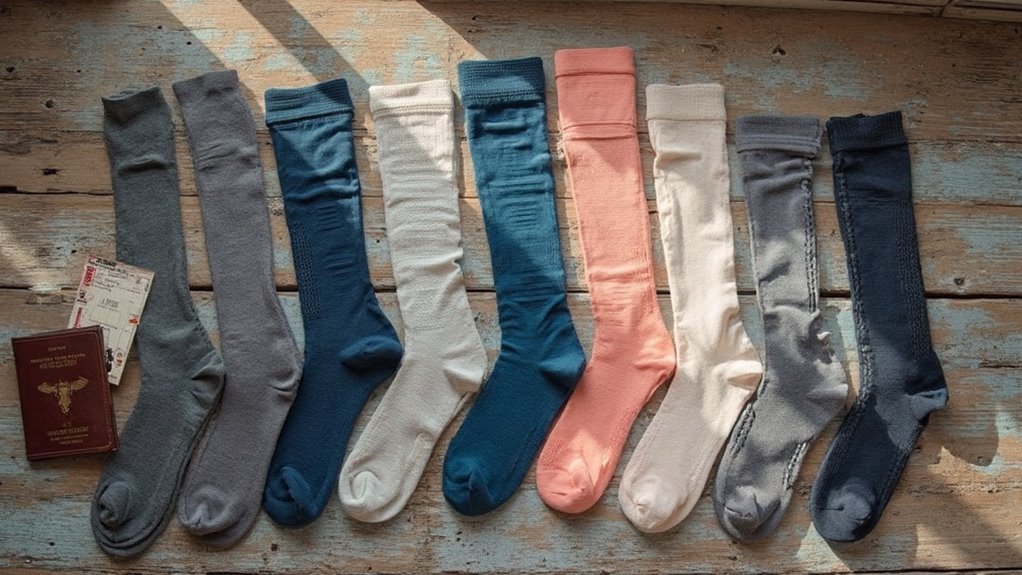Table of Contents Show
There may be products. Products are independently selected by our editors. We may earn an affiliate commission from the links with no charge to you, example: as Amazon Affiliate.
We recommend packing a compact first aid kit with essential items like adhesive bandages, gauze, medications, and antiseptic supplies for your travels. Keep everything in a water-resistant, zippered container around 8x5x3 inches that fits easily in your luggage. Don’t forget prescription medications, climate-specific items, and activity-related supplies. Regular maintenance guarantees your kit stays ready for emergencies. Our thorough guide will help you prepare the perfect travel medical kit for any destination.
Key Takeaways
- Pack essential first aid items including bandages, gauze, medications, antiseptic wipes, and emergency supplies in a compact, water-resistant container.
- Include sufficient prescription medications plus extra doses, along with common over-the-counter drugs for pain, allergies, and stomach issues.
- Choose a compact kit around 8x5x3 inches with organized compartments that fits easily in luggage and allows quick access.
- Adapt your first aid supplies based on climate, destination, and planned activities like winter sports or tropical environments.
- Check and maintain your kit every six months, replacing expired medications and restocking used supplies with a detailed inventory list.
Essential First Aid Items for Your Travel Kit
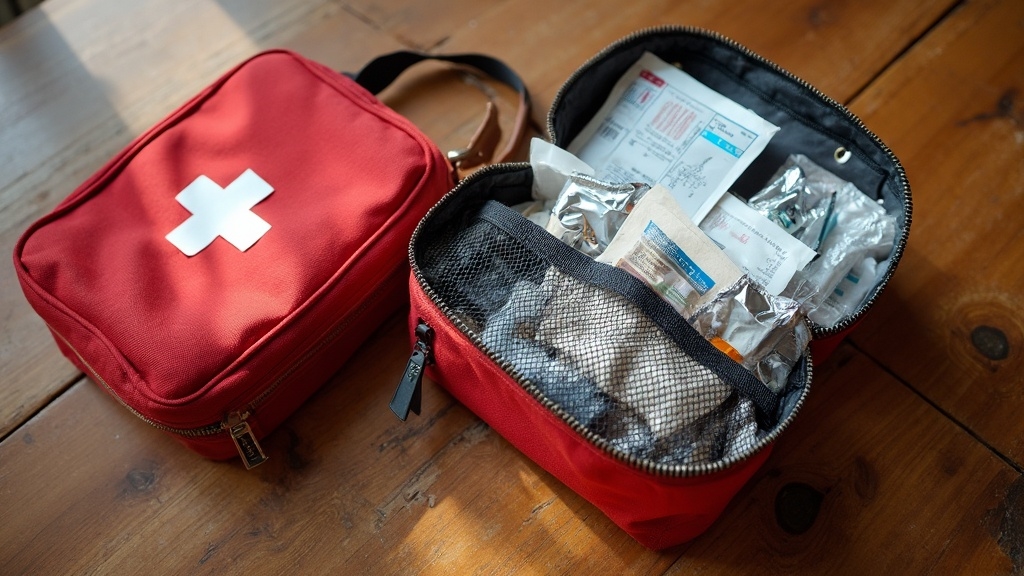
When preparing for your next adventure, assembling a thorough first aid kit can make the difference between a minor inconvenience and a trip-ending emergency. We recommend starting with adhesive bandages in multiple sizes to address minor cuts and scrapes, along with gauze and tape for larger wounds. Your travel medical kit should include essential medications like pain relievers, antihistamines, and anti-diarrheal medicine to handle common ailments.
Additionally, compact and lightweight kits like the PTEROMY 150 Piece Mini Kit are perfect for travelers who want to ensure they have the necessary supplies without adding bulk to their luggage. Don’t overlook the importance of antiseptic wipes and antibiotic ointment to prevent infections before seeking professional medical care. Include practical tools like TSA-approved scissors and tweezers for basic wound care. Complete your kit with emergency supplies such as disposable gloves, instant cold packs, and a thermometer to monitor fevers. These items guarantee you’re prepared for most travel health situations. Additionally, consider including a lightweight, portable kit to ensure that your essential supplies are easy to carry on your travels.
Choosing the Right Kit Size and Container
Now that you’ve gathered your medical supplies, selecting the right container and size for your first aid kit becomes the next key step. We recommend choosing a compact size first aid kit that’s both practical and easily accessible during your travels.
When selecting your travel size first aid container, look for these essential features:
- A zippered container that compresses when not full and provides quick access to supplies
- Water-resistant materials to protect your medical items from moisture and weather
- Dimensions around 8 x 5 x 3 inches for ideal portability, making it similar in size to many TSA-approved kits.
Remember to weigh your group size when choosing the container. While a smaller kit works well for solo travelers or pairs, larger groups need more all-encompassing storage options. The right container should fit comfortably in your luggage while keeping supplies organized and protected throughout your journey. Having compact first aid kits on hand can make a significant difference in handling minor injuries efficiently.
Medications and Prescription Supplies
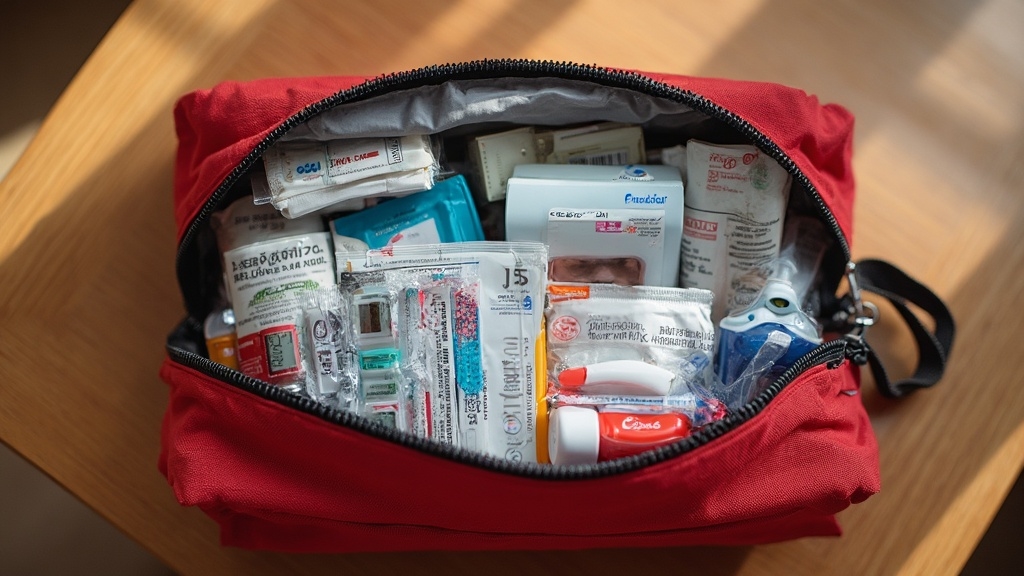
Packing the right medications and prescription supplies stands as one of the most critical aspects of travel first aid preparation. We’ll help you guarantee your first aid bag contains all the essential medications for your journey.
Let’s start with your prescriptions – pack enough for your entire trip plus extra doses for unexpected delays. Don’t forget to include common over-the-counter medications in your emergency kit: pain relievers, antacids, and antihistamines for allergic reactions. Your travel health depends on being prepared for common ailments. Engaging with diverse perspectives during your travels can contribute to a better understanding of health practices you might encounter abroad.
Keep a detailed list of your medications, including their generic names, in your first aid bag. This information proves invaluable when communicating with healthcare providers abroad. If any of your medications need refrigeration, plan accordingly and research your destination’s regulations about bringing prescriptions into the country. Additionally, embracing personal growth through traveling can enhance your ability to adapt to new situations and manage health-related challenges more effectively.
Wound Care and Emergency Treatment Tools
Before heading out on your travels, proper wound care supplies and emergency treatment tools deserve careful consideration in your first aid kit. We recommend packing items that let you quickly address common injuries and prevent complications. A well-stocked first-aid kit should include antiseptic wipes and creams to clean wounds, plus adhesive bandages in multiple sizes for proper coverage.
Essential emergency treatment supplies include:
- Tweezers for removing splinters and debris from wounds
- Instant cold packs to reduce swelling from sprains and burns
- A thermometer to check for fever and assess illness
These wound care basics enable you to handle minor emergencies confidently while traveling. Additionally, consider including resistance bands to assist with rehabilitation exercises if injuries occur. Travel can often lead to unexpected experiences that may require swift responses to injuries or ailments. Remember to check expiration dates and replace items regularly to guarantee your kit remains effective when needed most.
Climate-Specific First Aid Considerations
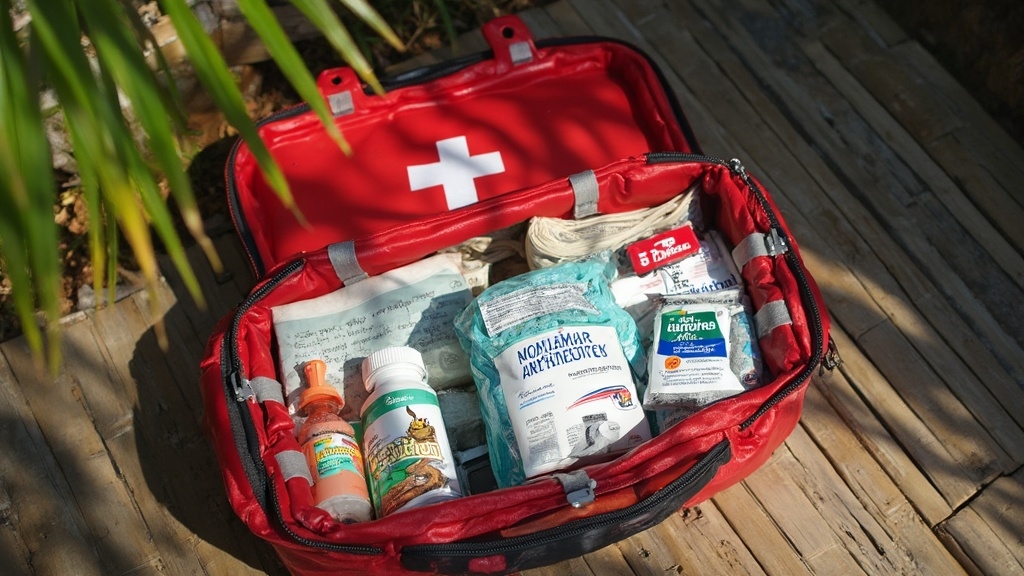
Different climates present unique health challenges that require specific additions to your first aid kit. When we travel to tropical regions, we’ll need antihistamines and DEET-based repellents to protect against mosquito-transmitted diseases. For high-altitude destinations, medical supplies like Diamox help us manage altitude sickness, while cold weather travel demands thermal protection and extra gauze for treating frostbite. Additionally, engaging with local customs can provide insights into cultural practices that help us navigate health-related issues.
In desert environments, we must pack hydration solutions and water purification tablets to combat dehydration. Coastal adventures call for specialized aid items like saline solution for sea-related injuries and aloe vera for sun exposure. By tailoring our medical supplies to specific climates, we’re better prepared to handle environmental challenges and can focus on enjoying our journey without worrying about climate-specific health concerns. Exploring destinations like Costa Rica’s biodiversity can also enhance our awareness of local health considerations related to wildlife encounters.
Customizing Your Kit for Different Trip Types
While the core elements of a first aid kit remain consistent, our specific activities and destinations shape the additional supplies we’ll need to pack. Let’s make certain we’re prepared by customizing our travel first aid kits based on our planned adventures.
- For tropical destinations, we’ll want a small pack with DEET-based repellent and water purification tablets to protect those in our care
- During winter sports trips, we’ll need thermal blankets and extra supplies for treating impact injuries
- When camping, we’ll focus on supplies for cuts and scrapes, adding snake bite kits and additional bandaging materials
Whether we’re exploring cities or scaling mountains, tailoring our first aid supplies guarantees we’re ready to help others in any situation. Remember to check local regulations and adjust quantities based on group size.
Maintaining and Updating Your Travel First Aid Kit
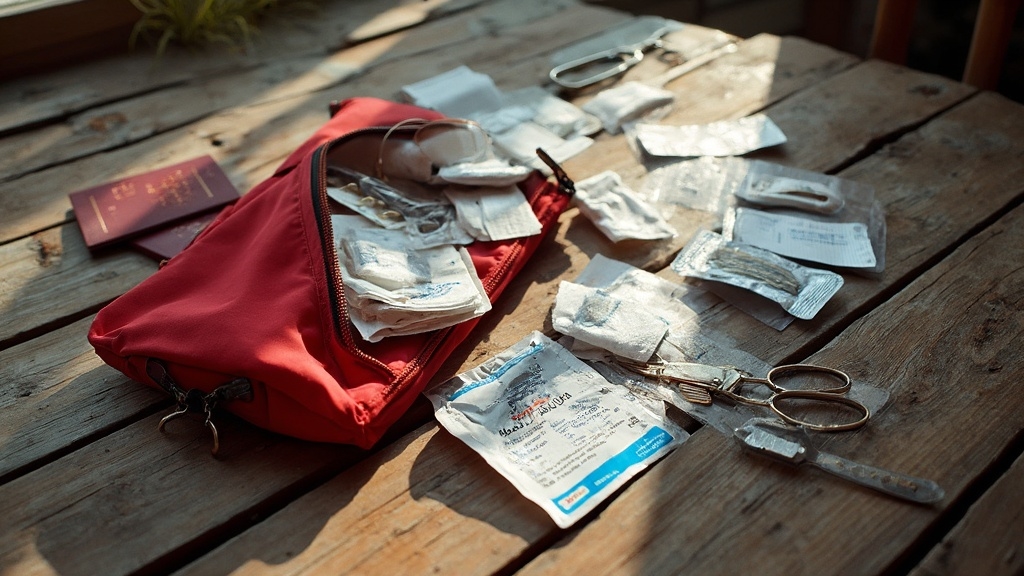
Having a well-stocked first aid kit is only the beginning – keeping it properly maintained guarantees we’re ready when emergencies arise. To reduce the risk of being caught unprepared, we need to check our travelers first aid kit every six months, replacing expired medications and restocking used supplies.
Let’s maintain a detailed inventory list with expiration dates and keep our kit in waterproof containers, especially when packing in checked luggage. We’ll want to verify our prescription medications are current and pack extra in case of travel delays. Remember to adapt the contents based on our destination – whether we need altitude sickness pills for mountain climbing or extra insect repellent for tropical locations. This systematic approach to kit maintenance gives us peace of mind, knowing we’re prepared to help ourselves and others during our travels.
Frequently Asked Questions
What to Pack in a First Aid Kit for Travel?
Let’s pack our travel essentials: bandages, pain relievers, antiseptic wipes, gauze, and basic medical supplies. We’ll organize our kit with emergency readiness in mind, following safety tips for protection.
Does OSHA Have First Aid Kit Requirements?
OSHA standards require us to provide first aid supplies matching our workplace hazards, but they don’t specify exact contents. We’ll need readily accessible supplies and regular checks to maintain workplace safety compliance.
What Are the Mandatory Items in a First Aid Kit?
When we’re treating injuries, we need these essential kit components: bandages, gauze, tape, antiseptic wipes, scissors, tweezers, pain relievers, and any personal medications for emergency preparation and travel safety.
How Many First Aid Kits Should You Have?
We’ll need at least one kit per person for emergency preparedness, plus a larger communal kit for family safety. Don’t forget kit maintenance and personal medications when planning multiple backups.
Conclusion
We’ve covered essential components for creating competent care kits, but remember: proactive preparation prevents problems. Let’s make safety second nature when we travel, keeping our kits current and customized for each journey. Whether we’re wandering wilderness trails or exploring new cities, our well-stocked first aid kit serves as our steadfast safety net. By packing smart, we’re protecting precious moments and memorable adventures.
